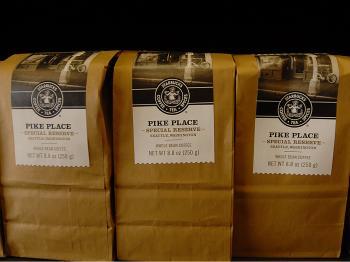California state officials are considering a scheme for eradicating the light brown apple moth, a pest potentially destructive to a broad range of agricultural crops, revealed a draft environmental impact report released on Friday.
The plan to exterminate the invasive pest includes alternatives such as mass trapping of female moths using port wine, releasing sterile male moths, or tying twist ties coated with pheromones on trees, hoping to disrupt the moth’s mating cycle.
Other strategies to wipe out the light brown apple moth include ground-breaking pesticide spraying; planting trap plants that are more attractive to the pest near protected plants; applying egg-laying repellents or releasing predators that would attack the moth’s caterpillars.
“Light brown apple moth is a new pest to North America that feeds on a broad range of plants including many agricultural, horticultural, and forest species of great economic and ecological value. If it is not completely eradicated while the moth population in the U.S. is relatively small, the long-term impacts to the environment and agricultural production could be considerable,” says the environmental impact report.
The moth is a native to Australia, and was first seen in Berkeley, California in early 2007. The local officials, in their attempt to get rid of the moth, used an aerial pheromone spraying campaign which was largely protested by residents in some urban areas and other communities.
But the moths are not only destructive to plants, as grape growers in California have struggled for years to eradicate a similar moth native to Mexico that wrecked havoc in local vineyards.It threatens cypress and oak trees by stunting or deforming young seedlings, damaging new growth in the forest canopy. The moth also feeds on host plants and spoils the appearance of ornamental plants, citrus, grapes, and deciduous fruit tree crops.
Ninety million dollars were allocated by the U.S. Department of Agriculture to eradicate the invasive light brown apple moth. But several local entomologists at the University of California opposed agricultural officials saying that attempts to eradicate the moth are a waste of money, and that the government should try to control, not eliminate species.
The light brown apple moth is an insect that feeds on 2,000 hosts including native plants and 250 crops, according to state agricultural officials. Statewide apple moth infestation has increased in density this year and was particularly destructive on berry fields near Watsonville, Calif. this summer.
More than 110,000 moths have been trapped in the state so far this year, according to state agricultural officials, and some are believed to have appeared arriving either on container ships, or on infested nursery stock shipped from abroad.
Currently, the moth quarantine boundaries in California are nearly 3,473 square miles, according to official estimates, prohibiting the movement of plants, flowers and fruits around the state unless they are free of pests.
For more information on the light brown apple moth, visit www.cdfa.ca.gov/lbam.



